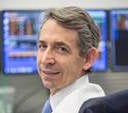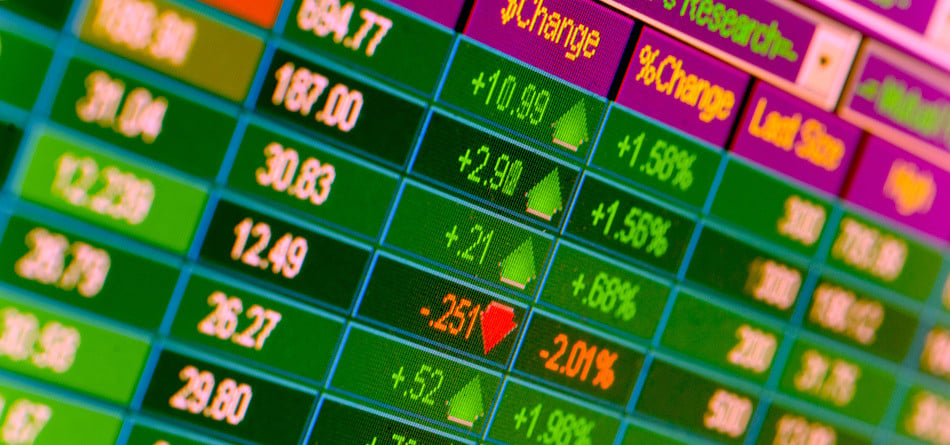As the buy side scours the equity markets for alpha, New York-based broker Auerbach Grayson is pointing institutional investors back to human traders who can tap their liquidity books and provide custom service that an algorithm can’t.
The firm’s mission is simple: get the buy side block liquidity in U.S. securities using top risk-management platforms and experienced sales traders. This builds off the firm’s emerging and frontier equity-market trading philosophy, melding a superior high-touch trading experience that combines a veteran sales trading staff with local research and broker know-how.
Auerbach began building its U.S. trading business by splitting the desk into two areas, program trading and block trading. To that end, last year the firm brought on equity veterans Doug Rivelli and Todd Trimmer to serve as co-heads of the firm’s U.S. equity sales and trading desk. Also at that time the firm grabbed Jack Duffy as head of U.S. trading. They join Garth Ballantine, a 13-year trading veteran, who is in charge of the firm’s established emerging and frontier markets trading.
Rivelli has a long Wall Street trading pedigree. He was chief executive officer at hedge fund Proteus Global Partners since 2013; previously, he was chief executive at Algorithmic Trading Management, the global, multi-asset class electronic trading unit of Cowen Group, and he also held senior electronic-trading positions at Pragma Securities and Weeden & Co.

Doug Rivelli, Auerbach Grayson
How does Auerbach plan to succeed in the congested and hyper-competitive U.S trading space?
Rivelli said it all starts with veteran sales traders who know how to get block trades done and can provide the buy-side with sources and relationships that produce liquidity. A lot of liquidity.
“Clients have said to us that they want more than some broker dropping an order into an algorithm,” Rivelli said. “While that is a big part of the business, it’s not the only part of it. We are focused on hiring senior guys with deep liquidity books and contacts who understand how to effectively source and interact with natural liquidity. Since our U.S. business is built exclusively on execution, we have to be the best at doing this.”
Since its inception in 1991, Auerbach Grayson has made its mark by giving the buy side high-touch access to frontier and emerging equities markets. In this space, the agency brokerage uses high-touch traders who tap directly into local brokers who can access a local firm’s executives and have a feel for the regional geopolitical and economic landscape.
“With direct access and coverage of over 3,152 companies, and through our network of 125 partners worldwide, we are strongly positioned to provide the best execution in virtually every part of the world,” he said. “Now it’s time to take what we’ve learned and apply it to the U.S. marketplace.”
To that end, Rivelli, Trimmer and Duffy are building the U.S. sales trading force in their own image, i.e. hiring traders with 15+ years’ experience and established books of business. Since January, Rivelli has landed two separate trading teams from rivals Oppenheimer and KCG, with the latter set to join in May.
Both Auerbach Grayson’s U.S. program trading and block desks have about 20 professionals. On the program trading side, the firm ultilizes a vendor-supplied but customized real-time risk management system that helps traders look at the whole global program trade and assess risk, rather than merely look at risk on a single stock or regional basis, before executing a program order.
“The risk management system looks at stocks in real-time and evaluates how they are behaving and how the portfolio risk is evolving versus pre-trade expectations,” Rivelli said, “Then we take the analytics and use them in a high-touch way to craft a dynamic strategy to either take advantage of something positive, or mitigate something negative in a trade.”
The block business is based largely on the sales traders’ access to liquidity. Rivelli said he is looking to re-create the high-touch trading desk of the past, with human traders providing market ‘color’ in a way that today’s highly electronic marketplace has neglected. According to Rivelli, while electronic trading has helped the equity market structure and has a place in trading, too much of it has left certain institutional investors with too few high-touch trading choices.
“We believe that pendulum has swung too far” away from high-touch trading, Rivelli said. “I ran two very successful electronic firms where all we did was offer low-touch electronic trading, so I know that space intimately. But the problem is that electronic tools have gone from being tactical in nature to more efficiency-minded, and that is not the direction we should have gone. We really believe there is a strong need and want for good high-touch trading desks, supported by electronic trading tools.”
And it’s the human trader who can best decide either to employ an algorithm, seek natural liquidity, or commit capital on behalf of a client.
“The ability to find a block cross is critical, especially in difficult names, and that’s where the human comes in,” Rivelli said. “It’s his job to develop a strategy to get this type of trade done. Traders will go wherever they can to find liquidity, either in the public exchanges or in the dark pools.”














